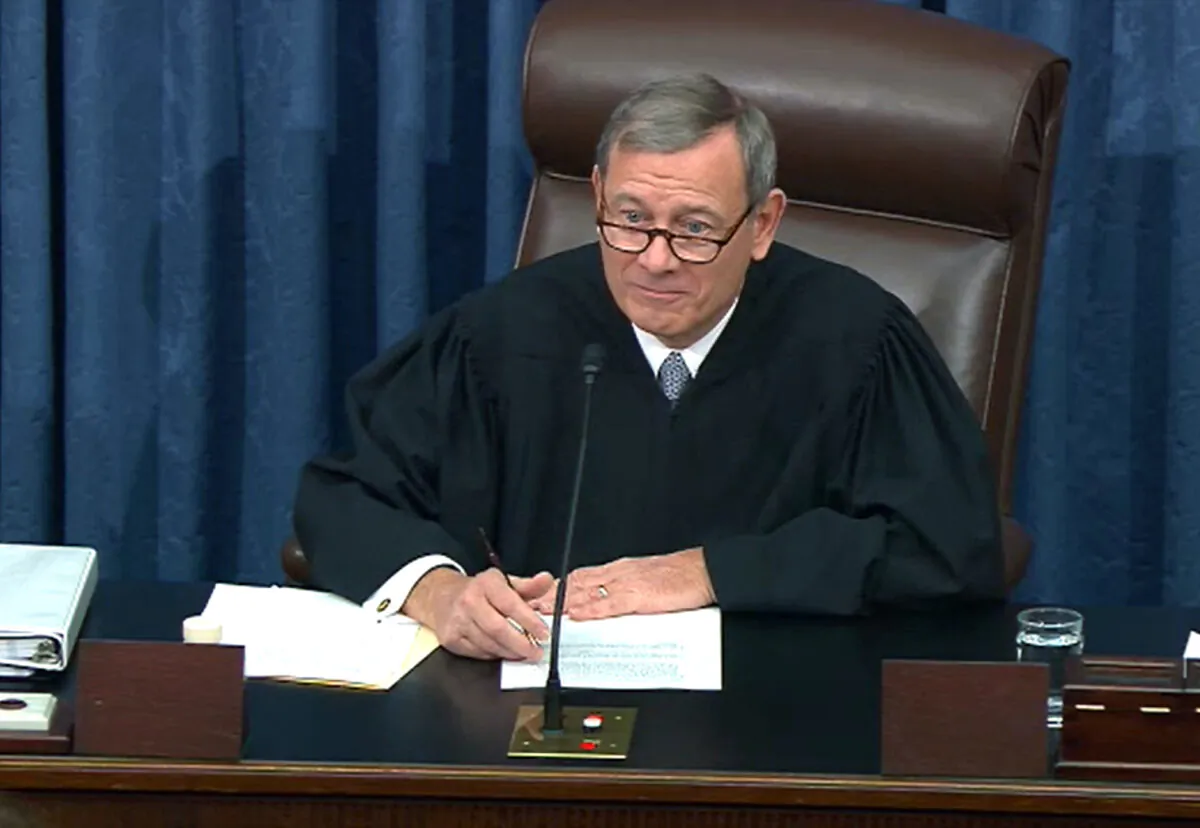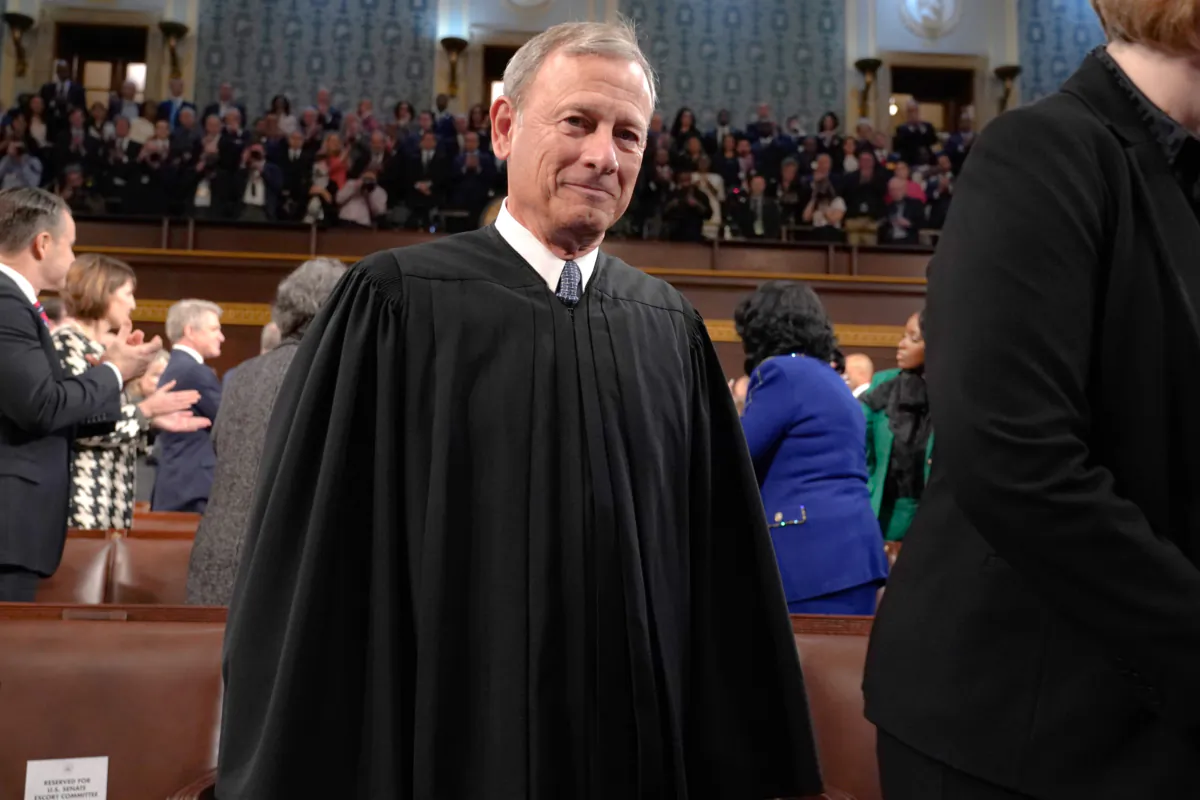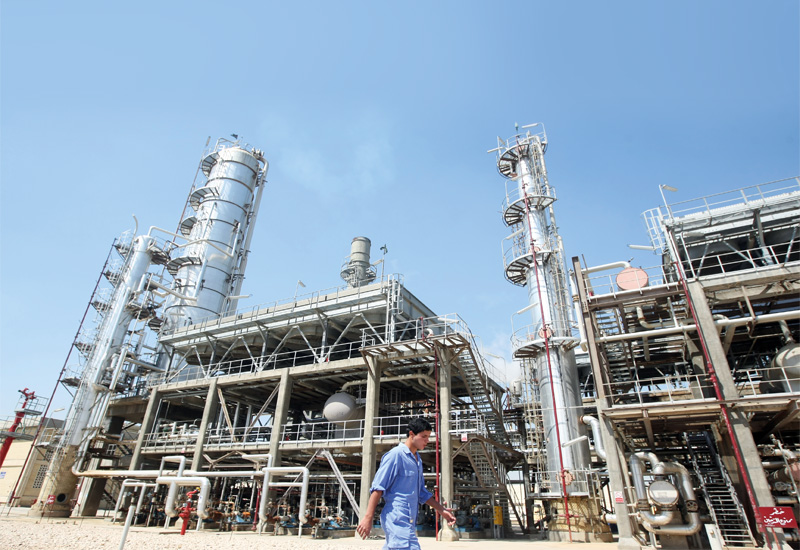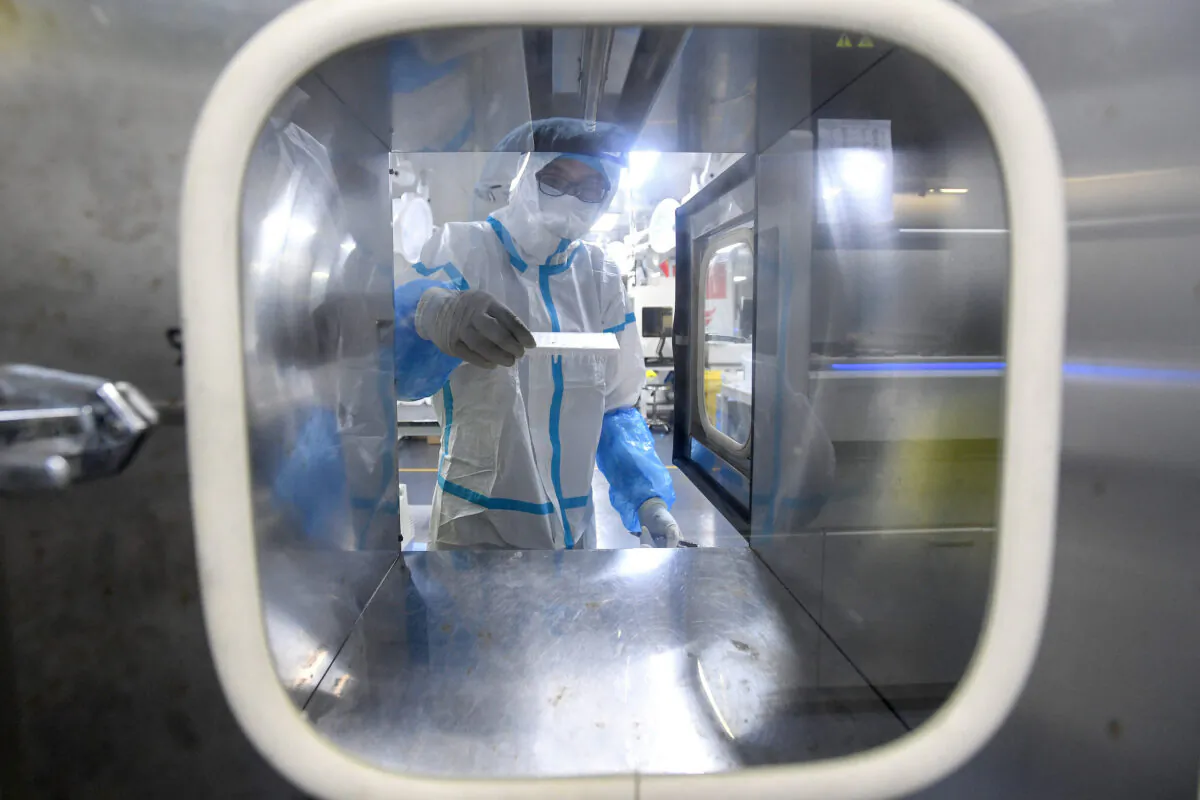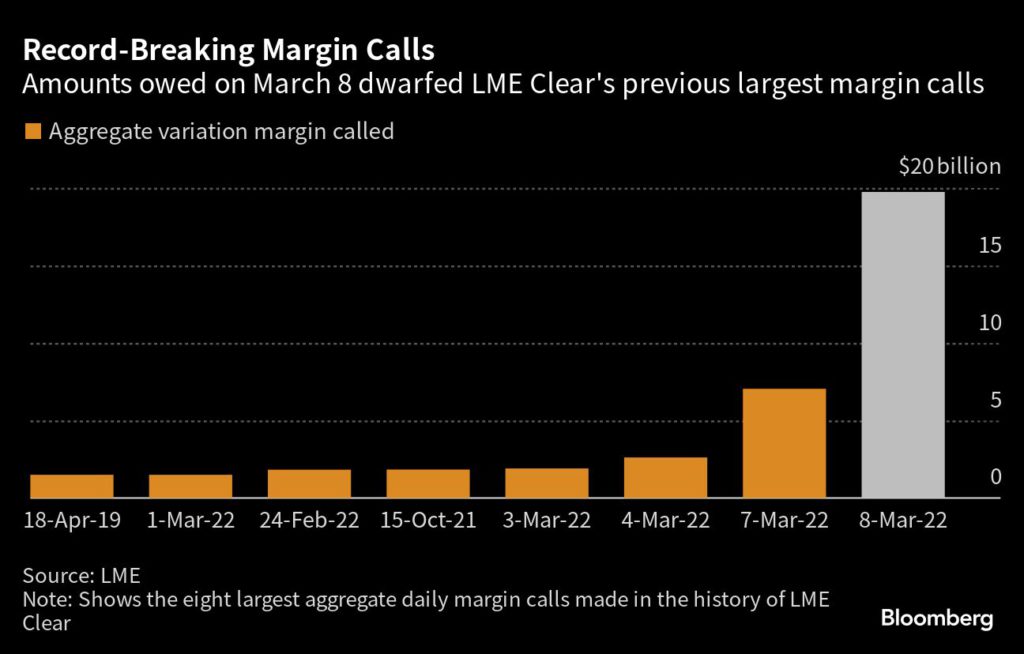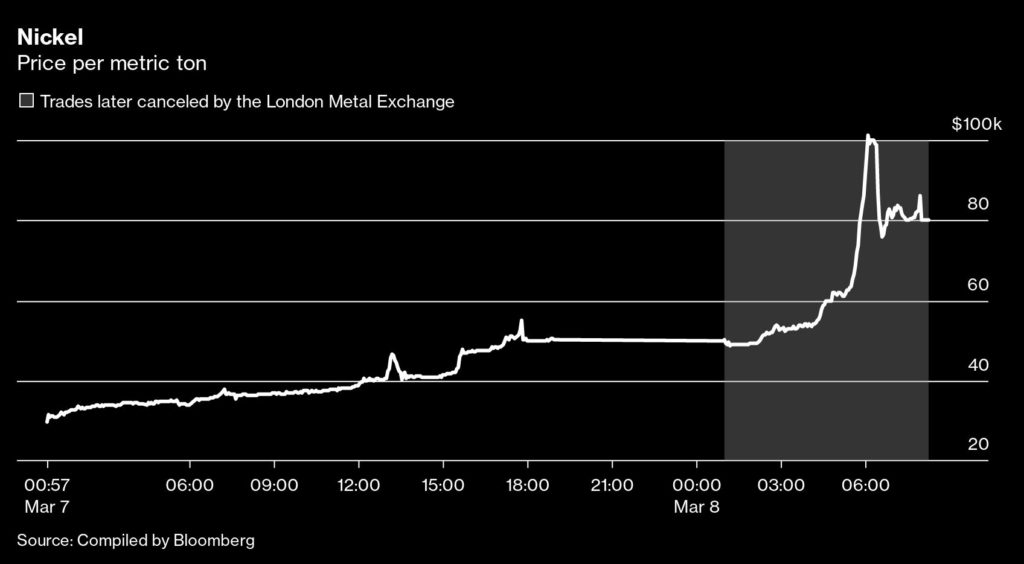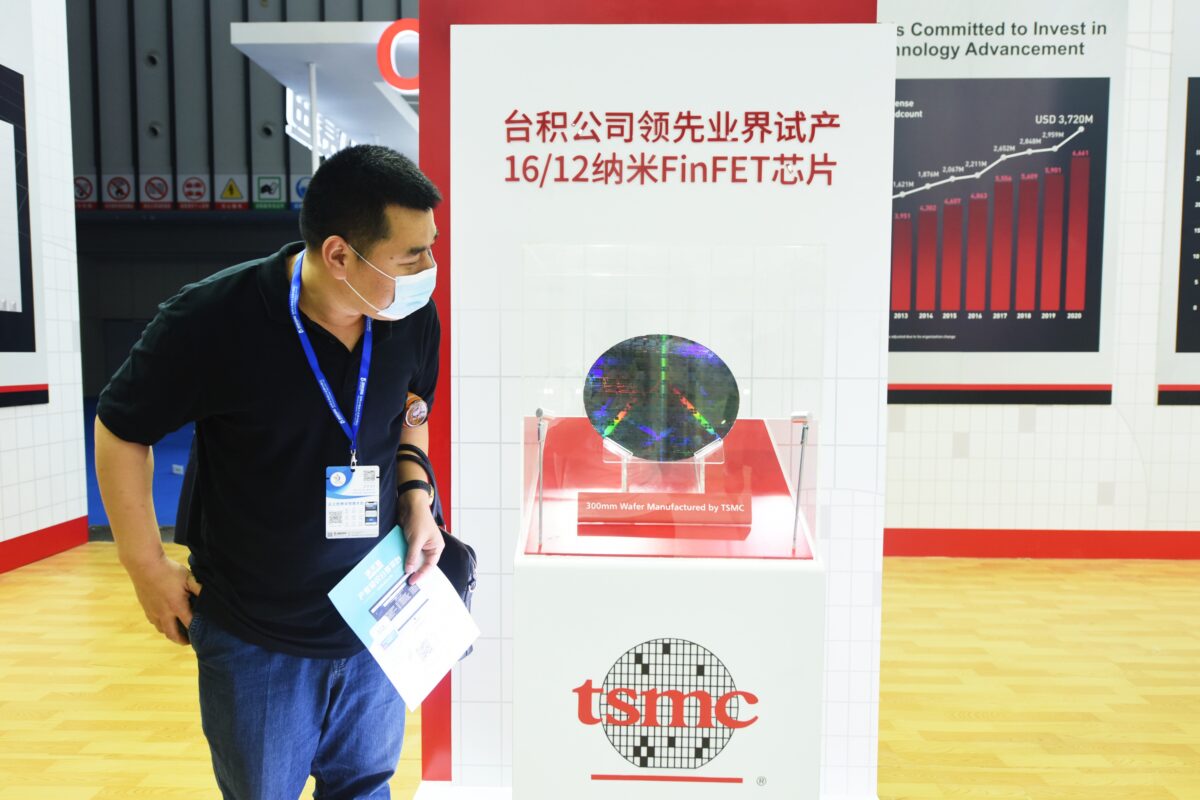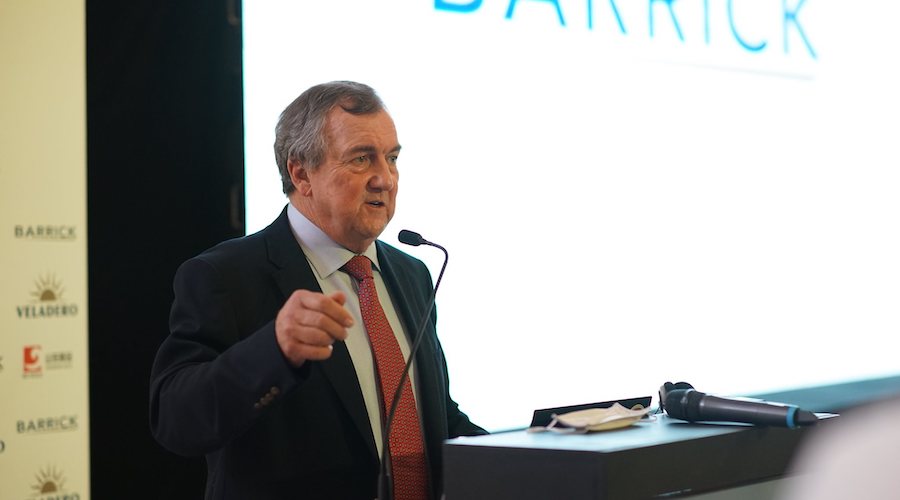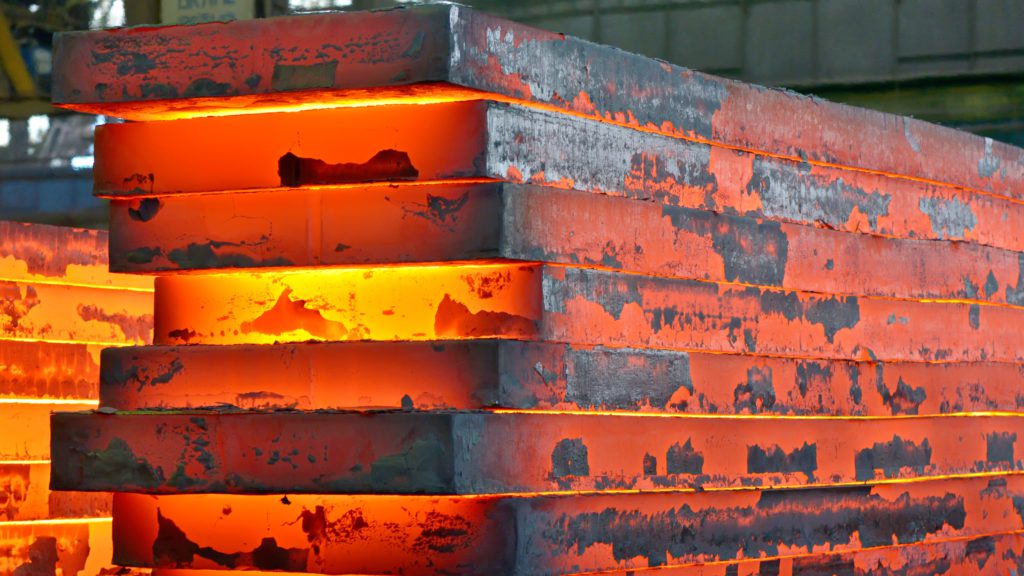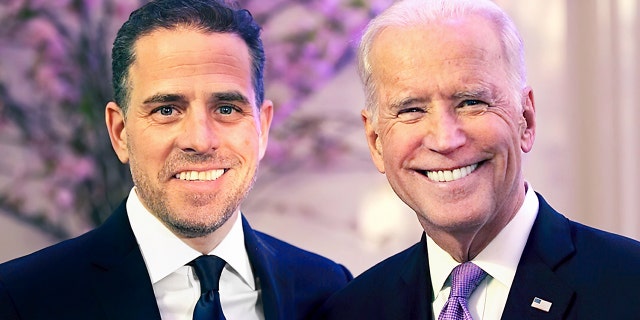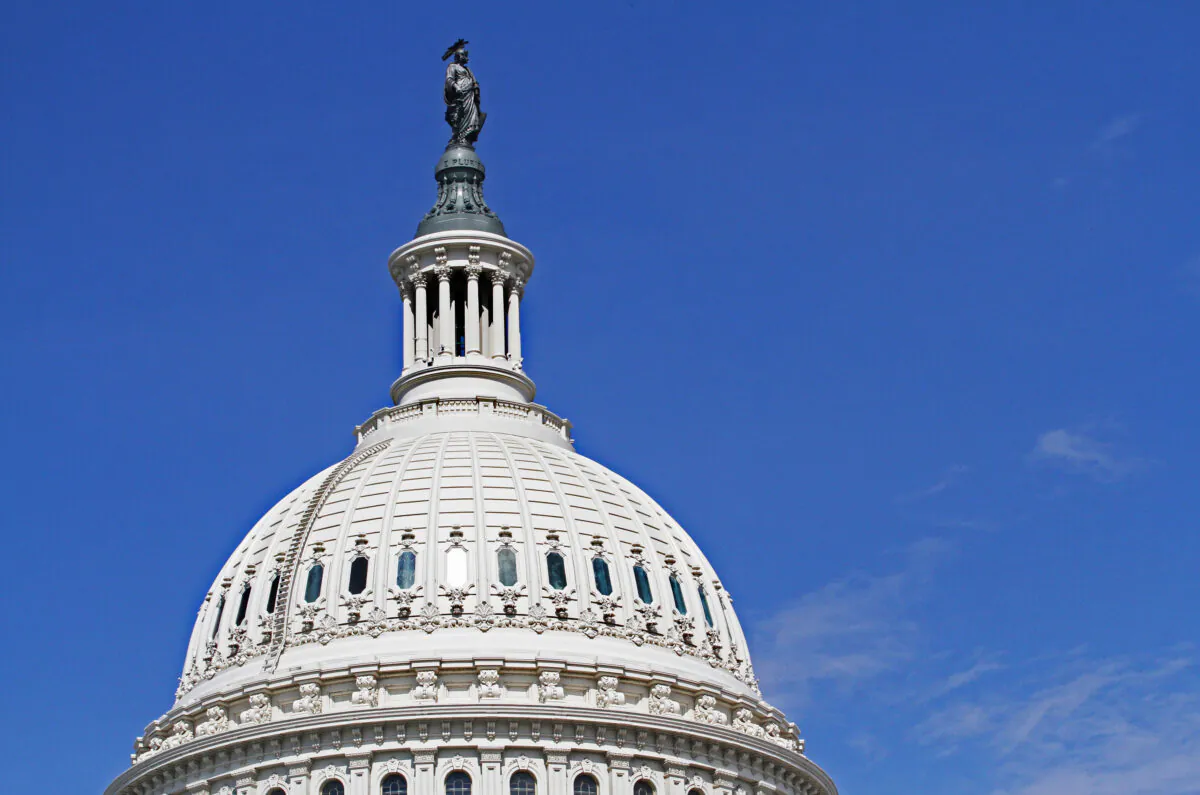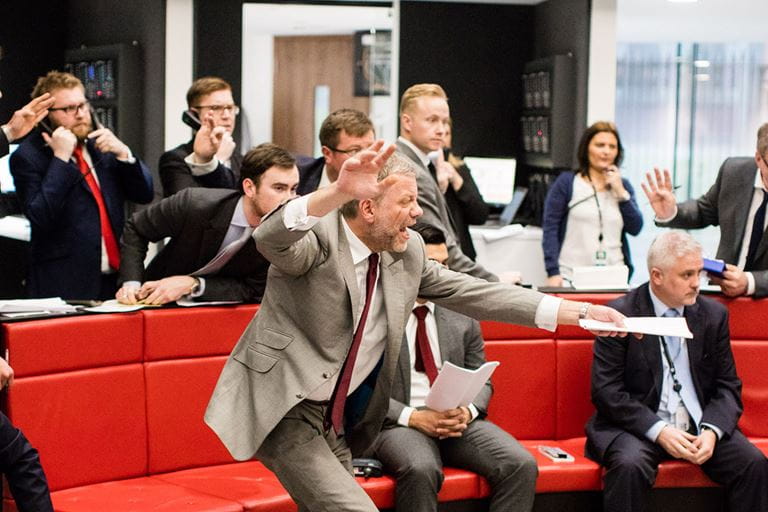
https://www.mining.com/web/what-really-happened-the-night-the-nickel-market-broke/
Matthew Chamberlain had just presided
over one of the wildest days in the history of metals markets when he
sat down to type a late-night memo to the UK’s financial regulator. But
the London Metal Exchange’s chief executive was optimistic.
It was the evening of March 7 last year and nickel prices had surged
as much as 90% to an unprecedented $55,000 a ton, causing huge strains
across the market. A large Chinese bank had missed a margin call in the
hundreds of millions of dollars. The Financial Conduct Authority was
beginning to demand updates.
Sign Up for the Africa, Europe & Middle East Digest
Now, after a long day of meetings, calls, and emails, Chamberlain
summed up the LME’s position: the price spikes were explainable because
of jitters over Russia’s invasion of Ukraine, and the market was still
functioning. It didn’t see a need to intervene.
“We will see where we stand 0800-0900 tomorrow,” Chamberlain wrote.
“If the nickel price has fallen overnight, we’ll be in a much better
position.” At 9:36 p.m., he pressed send.
By the time he woke up at 5:30 a.m., the market was in chaos.
The broad outlines of what happened in the nickel market last year
are by now well known. Prices did start rising because of worries over
Russian supply, but by the time of Chamberlain’s memo the nickel market
was in the grips of a violent squeeze centered around a short position
built by Xiang Guangda of Tsingshan Holding Group Co., the world’s top
nickel and stainless steel producer. A few hours after Chamberlain woke
up, the LME announced it was cancelling all nickel trades that had taken
place on March 8.
Now, documents made public in a court hearing this week recount in
unforgiving detail the LME’s fateful decisions in early March, and how
it sleepwalked into a crisis with little precedent in the modern history
of finance.
Across 649 pages of filings and witness statements, they reveal that
the LME was largely in the dark about Tsingshan’s role as the major
driver of the price spike until after it had decided to cancel billions
of dollars of nickel trades; that the exchange’s top decision-makers
were asleep as the market spiraled out of control; and that Chamberlain
made the key decision that the market was disorderly in about 20 minutes
after he woke up on March 8 – unaware until much later that the LME’s
staff had allowed prices to move more rapidly by disabling its own
automatic volatility controls.
Death spiral
The LME has acknowledged that it has lessons to learn from the events
of last year but insists it acted in the best interests of the market
to avoid a “death spiral” that threatened to bankrupt a dozen banks and
brokers and posed a risk to the wider financial system.
“The LME is not meant to be a spectator,” Jonathan Crow, a lawyer for
the LME, said in court on Wednesday. “It is meant to be operating an
orderly market and then it must intervene in moments of disorder.”
Read more: LME cancelled nickel trades to ‘save’ Tsingshan, London court told
Its handling of the saga has been criticized by everyone from
the International Monetary Fund to Citadel Securities’ Ken Griffin. And
the crisis threatened the existence of the 146-year-old LME itself. In
the words of its chief risk officer, the situation carried “a
significant risk of market collapse leaving the LME unable to function
as a venue for the world’s non-ferrous metals markets.”
The outcome of the legal battle playing out this week in London’s
High Court could be similarly existential for the LME. Hedge fund
Elliott Investment Management and trading firm Jane Street are seeking
$472 million in damages in a judicial review, but the $12 billion of
trades the LME cancelled on March 8 is more than 100 times its annual
profit. Even if the LME prevails, it faces an uphill struggle to rebuild
its reputation among investors and an ongoing investigation from the
FCA.
Big bets
Six months before the crisis, in September 2021, traders at Elliott
had started placing a bet that nickel prices would rise. The hedge fund,
run by billionaire Paul Singer and best known as an activist
shareholder and ferocious litigator, is a significant player in
commodity markets with a taste for big wagers.
Around the same time, at Tsingshan’s offices in Shanghai, Xiang was
coming to the opposite view. Like Elliott, Xiang, who’s known as ‘Big
Shot’ in Chinese commodities circles, also has a history of betting big.
He’d built Tsingshan from a modest start into a global metals behemoth,
and now he was backing himself to deliver again: with plans to boost
production significantly, he reckoned prices could only fall. He started
building up a large nickel short position.
By February 2022, it was clear that Elliott’s view of the market was
prevailing. Stocks were low, demand for nickel in electric car batteries
was booming, and traders were fretting that supplies from Russia could
be cut off.
“Wow,” Elliott’s contact at JPMorgan said in an instant message. “We did that at the right time.”
The market started trading in a self-reinforcing cycle, known as a
“short squeeze.” Higher prices forced Xiang to post more margin, leading
him to reduce his position by buying back contracts – and so pushing up
prices further.
Yet the LME remained largely unaware of Tsingshan’s role in driving prices higher as the chaotic events unfolded.
The LME’s senior management first became aware of Tsingshan’s short position when Bloomberg wrote
about it on Feb. 14, according to the witness statements. However,
while Chamberlain recognized that the position was large, he did not see
it as “a particular cause for concern,” and therefore did not request
any further information.
Margin calls
Without that, the LME only had access to data about Tsingshan’s
on-exchange position, and not the portion of its position that was held
bilaterally, or over the counter. Bloomberg has since reported that Tsingshan’s total position was five times the size of the on-exchange part the LME could see.
On the morning of March 7, nickel prices leapt to $36,000 a ton, and
the strains were becoming apparent in the market. Four LME brokers were
late in paying their margin calls that morning.
One of them, a unit of China Construction Bank Corp., was unable to
pay a margin call in the hundreds of millions of dollars for the entire
day. It told the LME that the reason was because clients including
Tsingshan had not paid margin calls to it.
Defaults are not an everyday occurrence on the LME or any other
exchange. The LME’s clearinghouse had never put a member into default
since it started operations in 2014. That CCBI, as the unit is known,
was unable to pay its margin call was a sign of the extreme stress on
the market.
As prices surged, the LME began to hold discussions about whether and
how it should respond. The key question at the time, and one raised
repeatedly during this week’s legal case, is whether the market had
become “disorderly.”
LME executives discussed suspending the market on a call on the
morning of March 7. By 1:30 p.m., with prices up 60% for the day, James
Cressy, the LME’s chief operating officer said in an email that there
was “a question of how orderly the mkt is and whether we suspend.”
Still, nickel continued to trade.
But in recognition of the strains spreading through the market, the
LME’s clearinghouse resolved to stop making margin calls until the
following morning – giving members more time to find cash, but also
potentially exposing LME Clear to a greater risk if prices moved even
higher.
When the LME’s “Special Committee” met at 4 p.m., it decided that the
market should remain open. The nickel price move could be explained by
geopolitical and macroeconomic factors, it concluded, deciding not to
impose any limits on the market.
About half an hour later, Chamberlain was forwarded a market commentary from an LME broker that read, “How closely do you need to monitor a market to spot something is not quite right !!!!!!!”
To bed
And when the LME’s key decision makers went to bed, CCBI’s margin
call remained unpaid. By that time, the exchange’s executives were
becoming increasingly concerned.
At 8:47 p.m. Adrian Farnham, the chief executive of LME Clear, sent a
WhatsApp message to Nicolas Aguzin, the chief executive of LME parent
company Hong Kong Exchanges & Clearing Ltd. He asked Aguzin to try
to speak to China Construction Bank, “because obviously we can’t really
allow” its CCBI unit “to not pay again.”
Nonetheless, Farnham, like Chamberlain, remained optimistic. “I went
to bed expecting that the nickel price would come back down,” he said in
a witness statement.
Elliott, on the other hand, was preparing for prices to spike. The
hedge fund’s traders sent a series of orders to their broker, Goldman
Sachs Group Inc., seeking to sell nickel should the price rise to
certain predetermined levels.
The nickel market opened as usual at 1 a.m. As Farnham and
Chamberlain slept, the market was calm for a few hours, but then
resumed its rise as panicky banks sought to reduce their exposure to
Tsingshan by covering part of the short position.
Jane Street alleges the very fact that the LME’s key decision makers
were asleep was a breach of the exchange’s regulatory duties, since it
meant that “no-one had been monitoring transactions in order to assess
whether there were disorderly trading conditions.” The LME disputes that
it was in breach.
What oversight there was came from the exchange’s trading operations
team. They were in charge of operating the LME’s price bands, a form of
speed bump designed to limit extreme price moves, such as in the case of
“fat finger” trades.
But in the early hours of March 8, the operations team received
numerous complaints from market participants that the price bands were
preventing them from booking trades. At 4:49 a.m., they suspended them
altogether.
Dizzying ascent
It was soon after this that nickel prices started the most dizzying
part of their ascent. By the time Chamberlain woke up, at 5:30 a.m., the
price was already $60,000 a ton. In the next 38 minutes, it rose
another $40,000.
“The abandonment of price bands caused or at least materially
contributed to the speed and scale of the increase in prices,” Jane
Street said in its court filing. “Without price bands in place, the LME
could not control price volatility at all.”
Chamberlain spent twenty minutes searching on his phone for a real-world explanation for the price move – browsing Bloomberg, the Financial Times and Google –
before concluding that the market was disorderly. “I had never
witnessed such extreme price movements in nickel (or any other metal
traded on the Exchange) before,” he recalled.
Chamberlain wasn’t aware that his operations team had suspended the
price bands, as he made his pivotal decision to suspend the nickel
market. In his witness statement, he said that the information wouldn’t
have affected the decision, as the price would have risen anyway, even
if the trading curbs were still in place.
“We are in serious difficulties”
The exchange still didn’t have a handle on the scale or the
importance of Tsingshan’s position — the real reason behind the runaway
rally.
Gay Huey Evans, the LME’s chair, had asked for an update on
Tsingshan’s position the previous evening, but when the FCA asked that
morning what was driving the nickel price, an LME staffer did not even
mention the possibility of a short squeeze.
“This is, as you’d expect, related to the ongoing situation in Ukraine,” he wrote.
Chamberlain said he “was not aware of Tsingshan being in any difficulty” until later that day.
That morning, CCBI, having enlisted support from its parent company, paid its margin call from the previous day.
Panicking brokers
But now there was a new problem. Brokers on the LME would normally
need to pay their first margin call of the day by 9 a.m., based on
prices prevailing at around 7 a.m. If that had happened on March 8, the
LME would have needed to request $19.75 billion from 28 banks and
brokers – an unprecedented sum that was more than 10 times the previous
daily record before March 2022.
LME executives were bombarded with calls and emails from panicking
brokers. “We will not be able to meet intra-day margin calls,” one
wrote, warning of their company’s imminent bankruptcy. “We are in
serious difficulties and will be invoking actions to halt the business.”
Another requested a call with “someone senior” at the LME to convey their company’s “pain.”
One member, who was among roughly 10 brokers through which Tsingshan
held its short position, wrote to Chamberlain saying: “You shouldn’t
have opened in Asia – now you have to cancel trades and reset to the
London close.”
Suspend the market
At 7:30 a.m., Chamberlain led a conference call for the senior
management of LME and LME Clear, as well as several executives from its
parent company HKEX. They agreed to suspend the market as soon as
possible. No minutes were taken.
By now, Elliott had sold 9,660 tons of nickel at the elevated prices
of March 8 via three brokers. The bulk of it was sold, in a single
trade, via JPMorgan Chase & Co. – in a deal that was confirmed at
8:14 a.m.
Having sold at an average price of just over $75,000 a ton, Elliott
stood to make a profit of around $50,000 a ton on its bullish bet.
“Wow,” Elliott’s contact at JPMorgan said in an instant message. “We did that at the right time.”
But the real bombshell was still to come. At 9 a.m., the LME held a
52-minute call to discuss what to do next. It considered and rejected
several options, including allowing the trades of March 8 to stand,
allowing them to stand but changing their price, and allowing them to
stand but calling margin based on the prices of the previous day.
Finally, Chamberlain made the decision to cancel the entire trading
session.
On March 9, as recriminations flew and with the nickel market still
closed, Chamberlain finally held his first call with Tsingshan.
The same day, Elliott’s lawyers wrote their first letter to the LME.
(By Jack Farchy, Mark Burton and Jonathan Browning)
